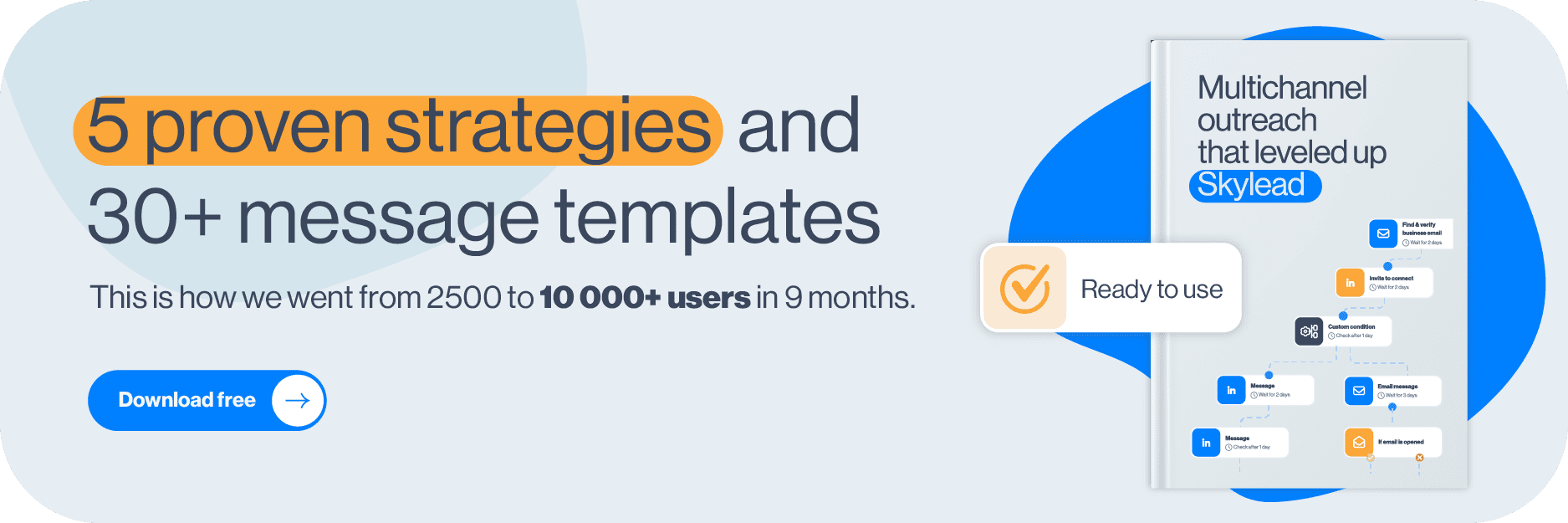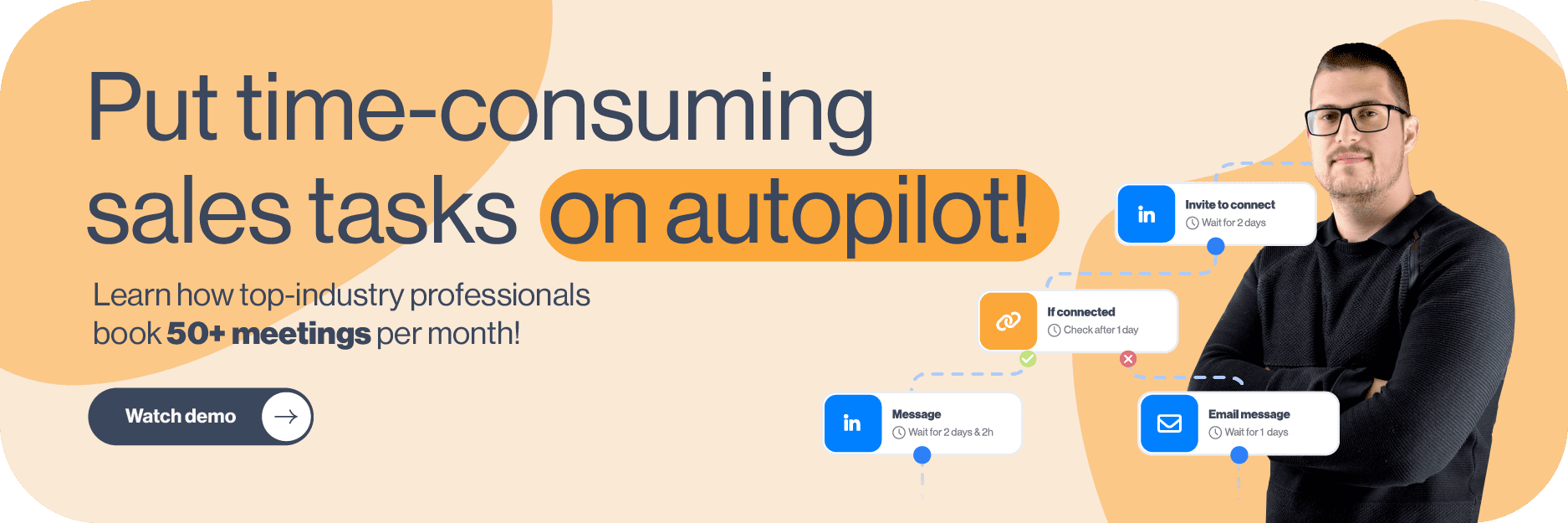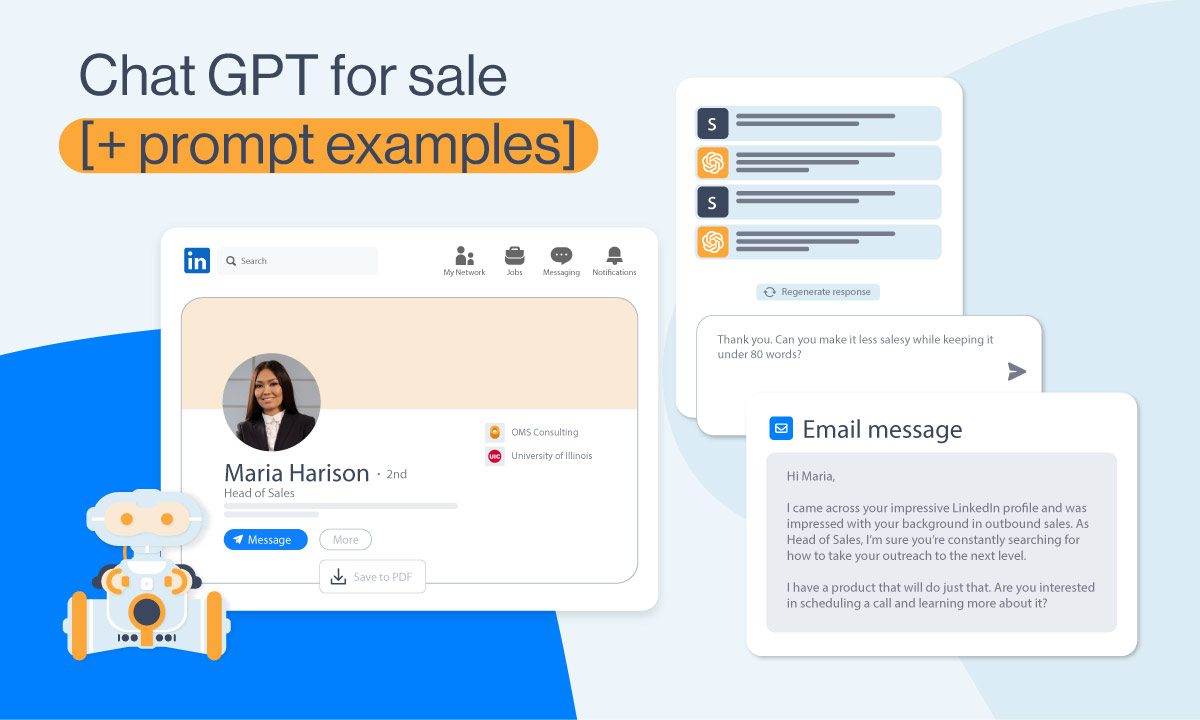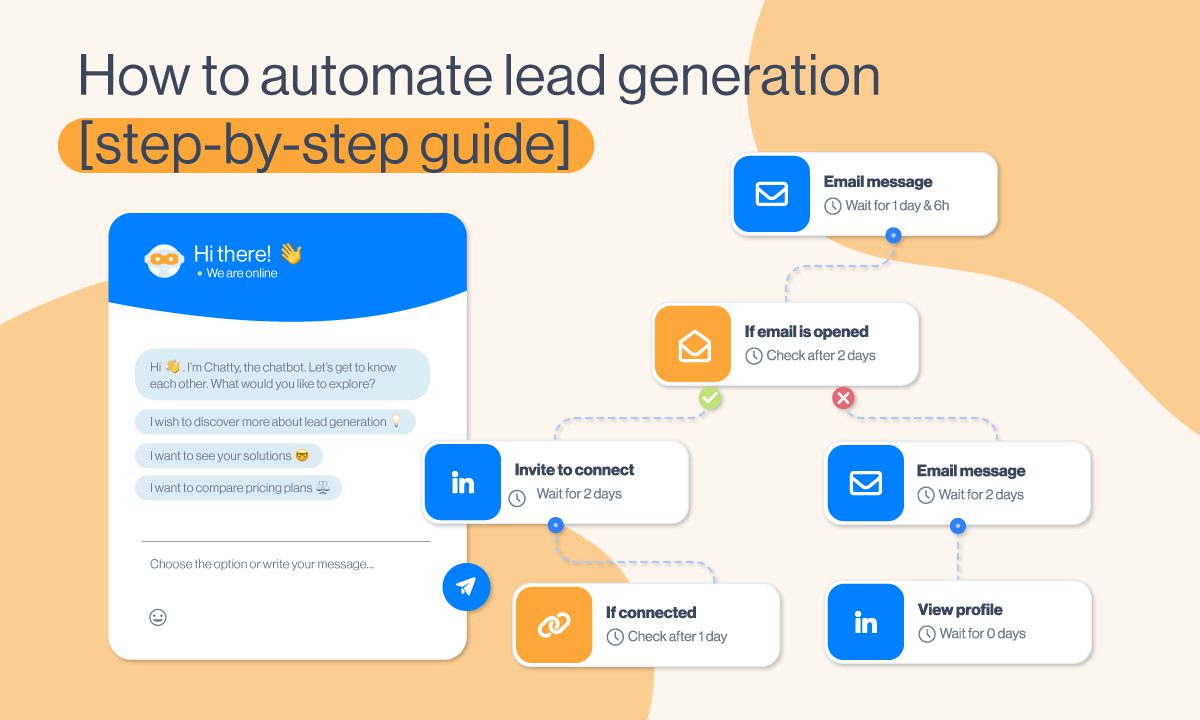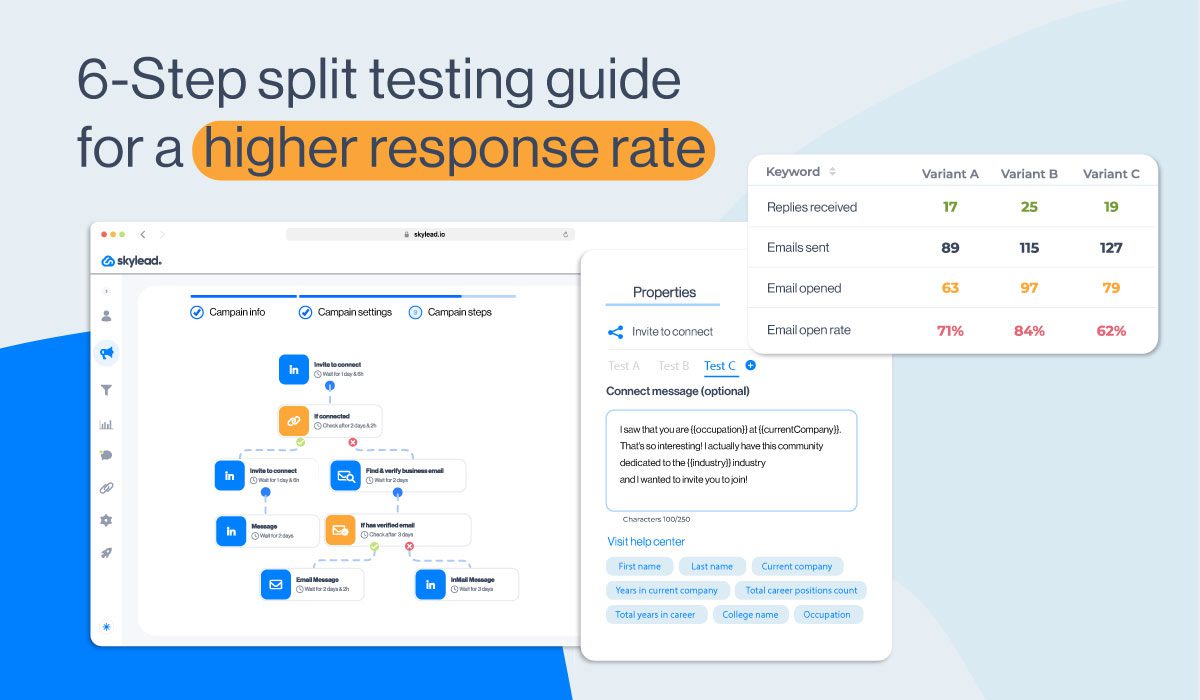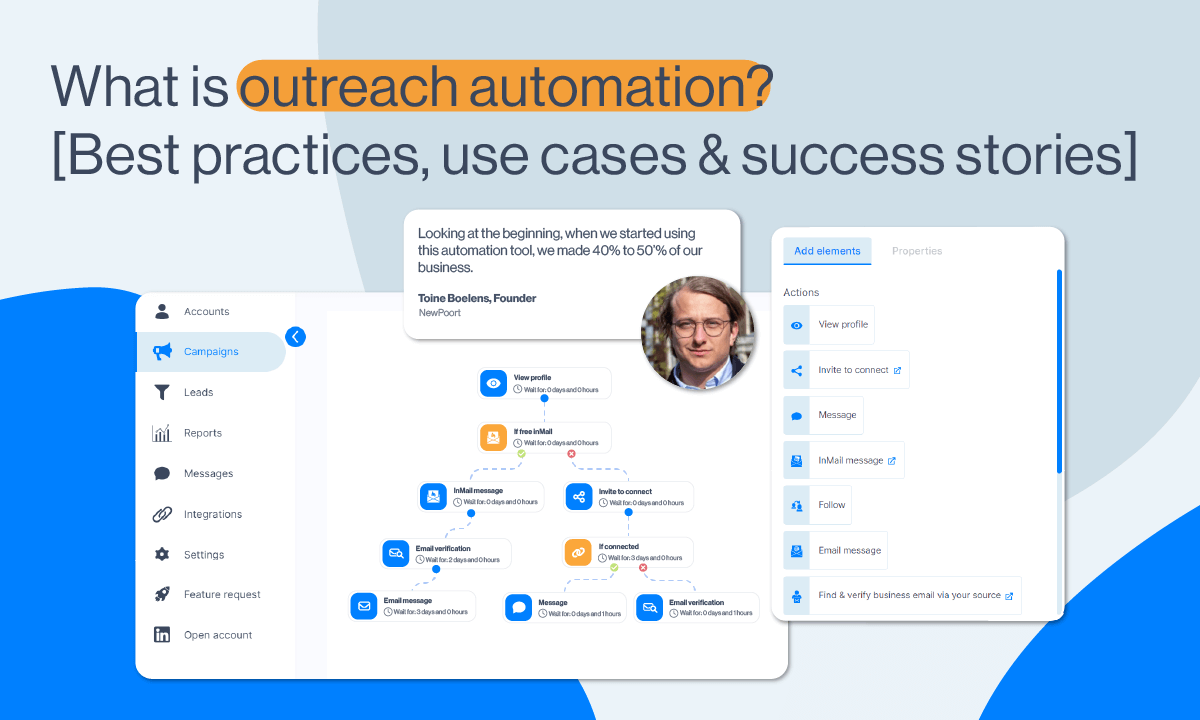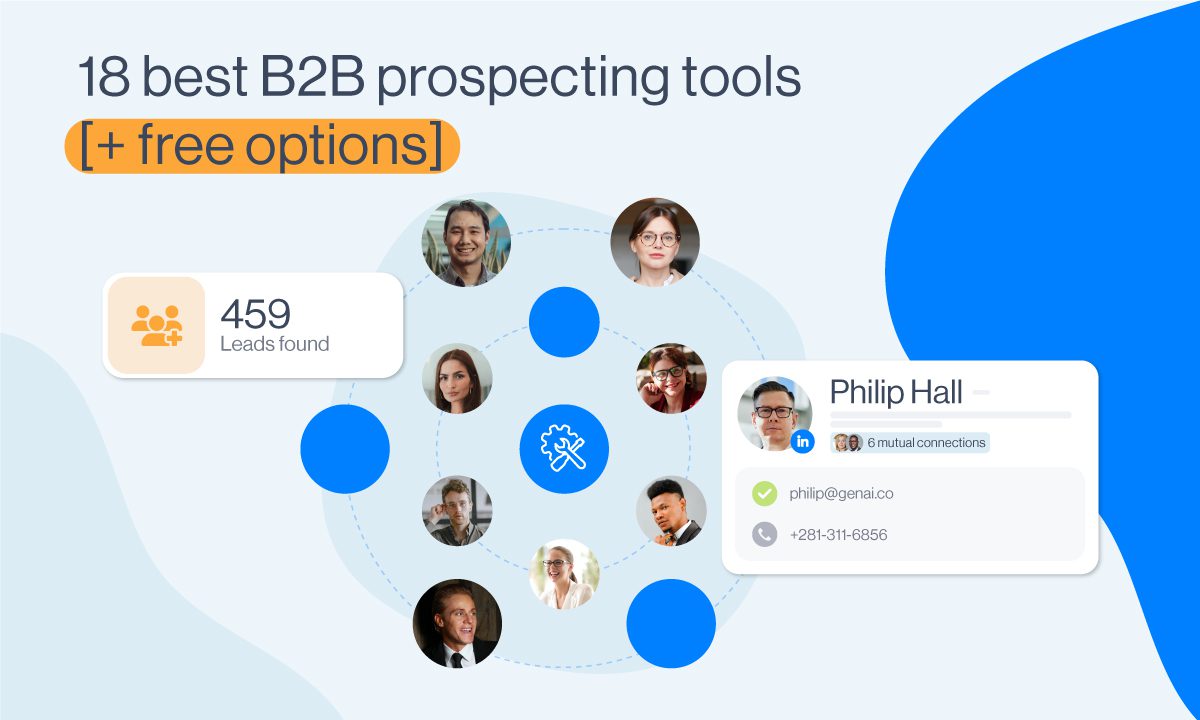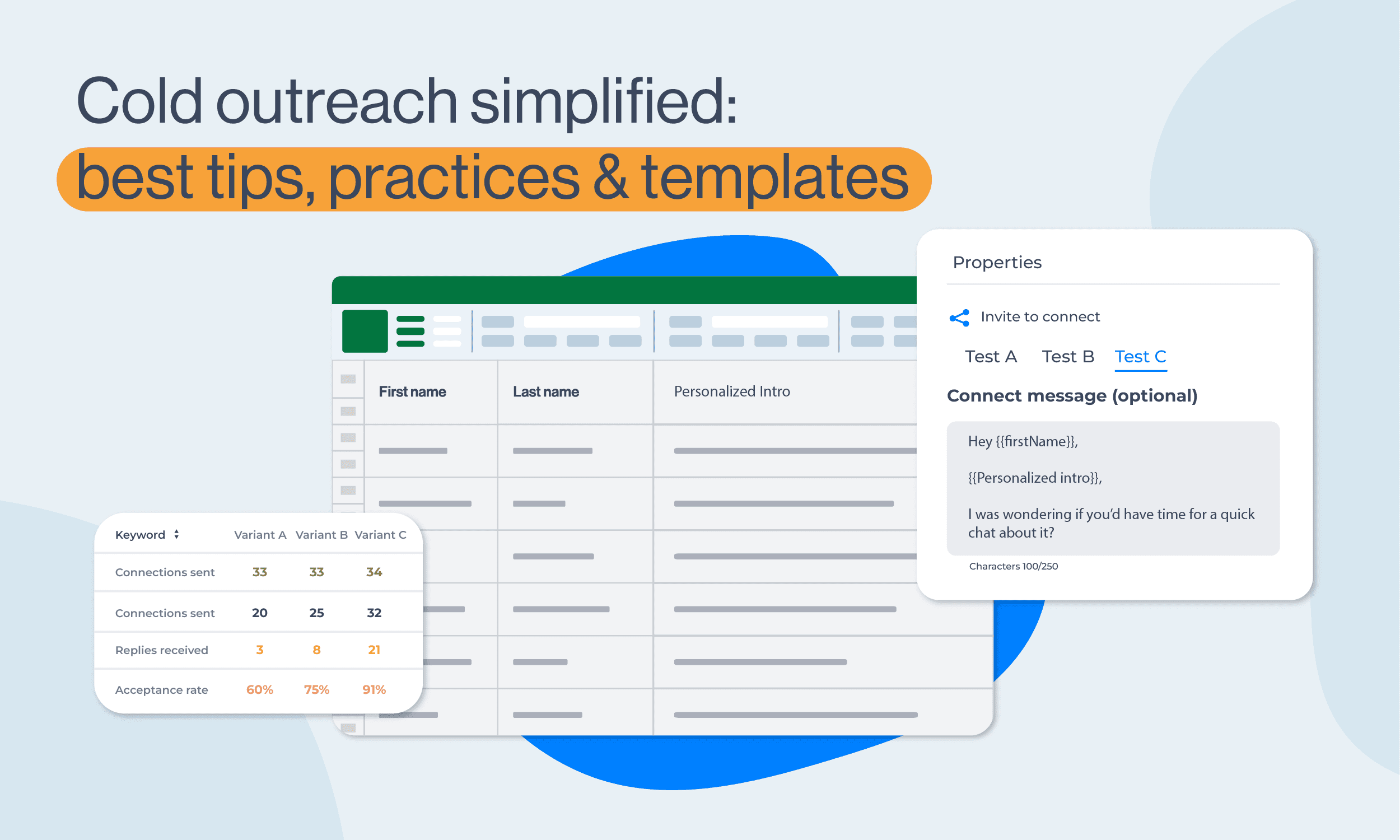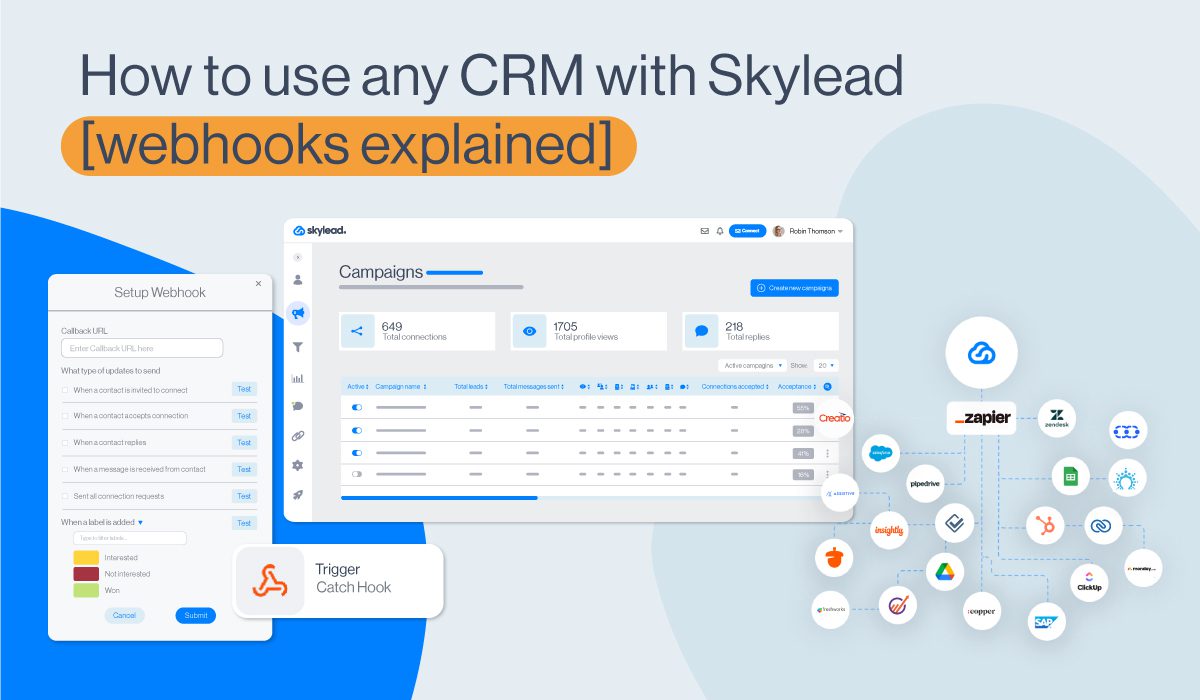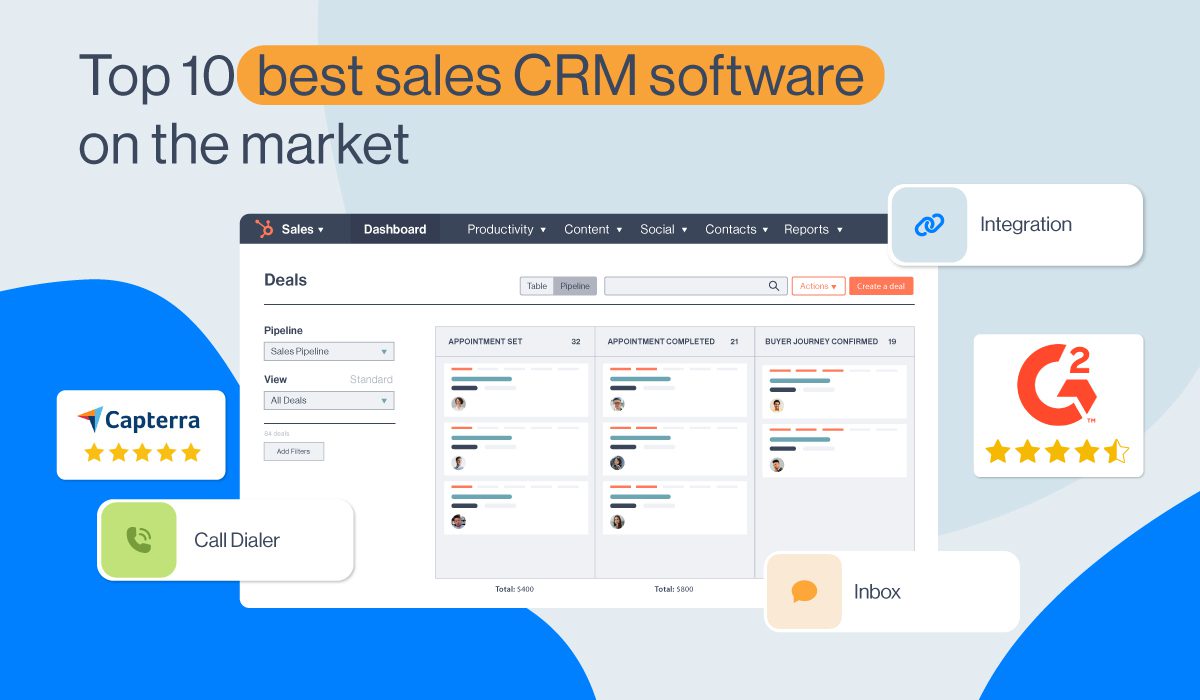10 objection handling situations with rebuttals examples to win them over
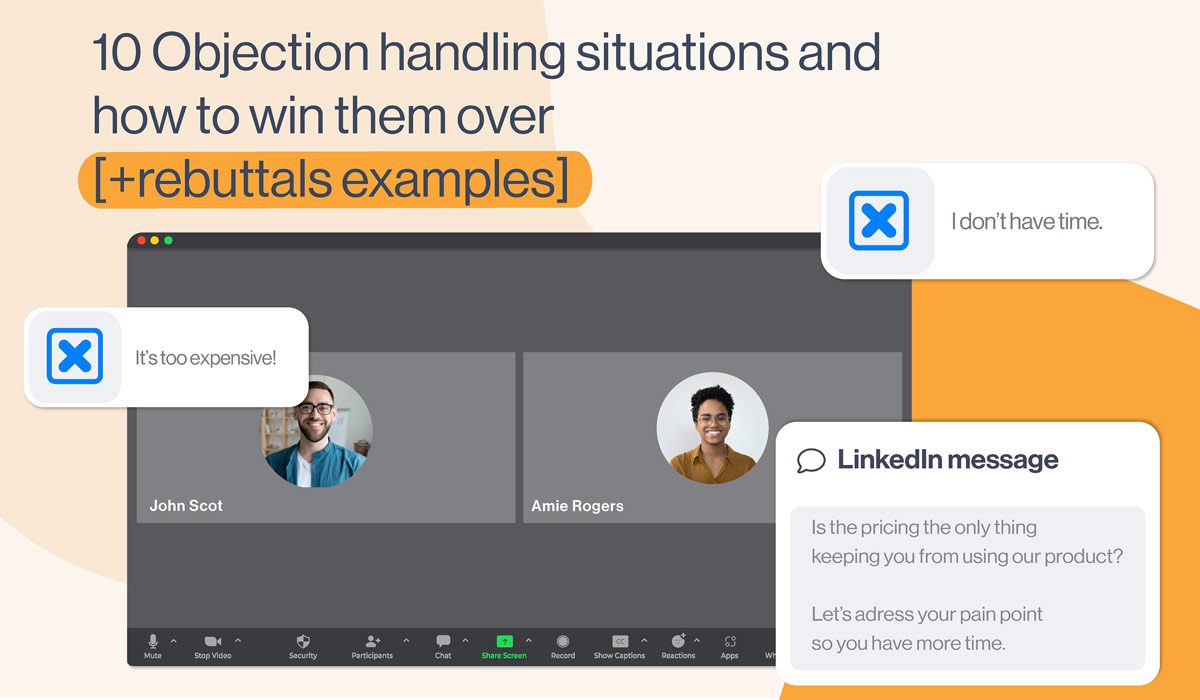
It’s not unusual to get an objection from anyone. It’s not unusual to go through objection handling at any time. But when you see the prospects can retract from the offer with the ring of the chime, it’s not unusual for them to say goodbye.
How many times have you heard objections such as “That all sounds great but…”, “It’s too expensive for us…” or “I don’t have time now”? If your answer is too many, and you’ve just got overwhelmed with sadness and helplessness, as you gave up in these situations, fear not. Let’s uncover the successful path that will lead you to win these objections.
So turn Tom Jones songs up and dance away your worries as we go into the details of how you can overcome most common objections easier and win them over.
What is objection handling in sales?
To put it simply, imagine you are in a meeting with the prospect, and suddenly they express their concern about the product or situation that they are on the verge of giving up. That is an objection for you.
Objection handling is when a salesperson responds to these concerns and elevates them, so the deal moves forward and closes. Your job, as a salesperson, is precisely overcoming objections, which can be tricky 90% of the time, and nurture them towards conversion.
The objection can happen due to poor LinkedIn prospecting or not finding your ideal prospect by generating leads on LinkedIn. However, even if you did all the things right, objections can happen, but the reason can be about the price, lack of authority, or competitors.
Overcoming objections 101: Tips for objection handling + rebuttals examples
We will present the main objection handling reasons, their variation, and some new ones but before we do, let’s first go over a few tips on how you can handle the objections.
1. Overcoming objections with the questions
Successful sales reps respond to objections with a follow-up question. Why? Well, because objections can have their hidden meanings, so it is vital to get to their root cause straight away. If you don't clarify the deeper reason behind objections, you might address the wrong core subject. Consequently, addressing the wrong issue might create even stronger objections.
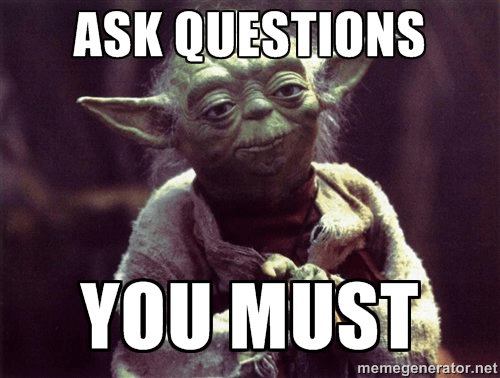
Now, what question should you ask to clarify objections? In his masterclass, Chris Voss, former FBI hostage negotiator, presents us with the tactic called mirroring. He claims that repeating the last few words of your buyer's sentence should do the trick, and the other side will give away more information. You should repeat it with an upward voice tone as if you're posing a question, and it will trigger the prospect to elaborate further.
This example alone is good for gathering more information on the situation, which you can later on spin. But to spice it up, we recommend mirroring with the follow-up question, as people can sometimes be short on words.
Example
Prospect: I am not the person in charge.
SDR: You are not the person in charge?
PAUSE
Prospect: No, Sally is.
SDR: Could you introduce me to her?
OR
Prospect: I am not the person in charge.
SDR: You are not the person in charge?
PAUSE
Prospect: No.
SDR: When you implemented a similar product, who was responsible for such a project?
Additional Hint: When clarifying objections, do not ask the questions that start with "Why". It can be considered as a threatening word that questions their objection credibility, and it will put them in the defensive mode.
2. Overcoming objections addressing the issues beforehand
One of the most effective ways to objection handling is to address core issues before the actual objection. By sewing specific objection handling into your pitch, you do not only address these issues beforehand but also demonstrate your knowledge and understanding of their challenges. Whatsmore, providing a hands-on solution enhances the connection with your prospects.
Example
Prospect: We are a pretty small company.
SDR: As a young company, I understand what investment in new tools means. Price-wise, you need not to worry, as our product is proven to have a 140% ROI at least. I can send you case studies to support this claim.
3. Overcoming objections by responding to the real issue
Remember the first tip, where you gather the objection information via the question? Well, this is where you use it, but first, you need to understand the process by which they convert.
When you know and understand the process, you can get a better feel for the meaning of the potential objection. So the tip is, after following the process and understanding the info, to respond to the real issue, not your unfounded vision of it. Gather the answers you need, and use them to demonstrate the specific solution and continue with the sales deal.
Example
SDR: We have many clients in your industry. As I understand, the main issue is to target the right, narrow-niche ICP and reach them faster than do it manually. Am I right?
Prospect: Yes, but not in our case. Actually, our main concern is that we won’t be able to use multichannel outreach as we cannot gather the email addresses and connect them with LinkedIn outreach. We still need to do it manually. That is what is wasting our time. And it leaves us with little time to properly do the research about the leads and nurture them to conversion.
SDR: I understand that time and results are often mutually sacrificed. The good news is that our product can search, validate, send out emails and link them with LinkedIn. So your multichannel outreach sequences can be up and running in a blink of an eye. There will be no more wasted time for your team - they can dedicate themselves fully to nurturing the leads to conversion.
4. Overcoming objections by offering help to the decision making
Another tactic to objection handling is to weave them into questions that help the prospect make better decisions. Finding the bulls-eye question helps us discover the right personal and business motivation for prospects to use your product or service. That is a mouthful. Let’s show it through an example:
Prospect: I do not have time for this. We have a lot of work in sales as-is.
SDR: That’s fair. But wouldn’t it be better to invest little time in learning the sales engagement tool to do all the outreach activities for you, so later on, you have more time to dedicate yourself to more pressing matters such as closing the deals?
5. Overcoming objections by selling the result
Nobody wishes to waste time talking about the process, especially not the decision-makers, as they are more interested in the result. So if you add a concrete value, preferably demonstrated by an exact metric, your product or service will be regarded as of higher value to a prospect.
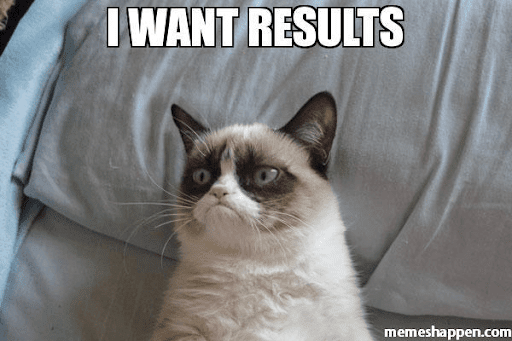
Example
Prospect: What do we have from using it?
SDR: As a software with more than 10K users and with many clients such as yourself, we have proven track to boost sales results up to 80% in your industry. I'd love to share a case study. It would be wonderful to speak with you about your sales process and see how we can help you, as well.
6. Overcoming objections by knowing your prospect’s industry
Knowing your prospects’ industry inside and out will help you position yourself better in your prospects’ eyes. Learn about their business, product or service, and even competitors. The knowledge you gather will ease objection handling and give you insights into what your prospects are looking for in the areas you can provide value to.
Top 10 objection handling situations
It’s important to note that it’s not possible to cover every scenario and concern, as there is no one-size-fits-all path to objection handling. However, you should prepare a solid response to the most common sales objections and go on from there to refine your reply as much as possible and grow leads until conversion.
In addition, don’t forget to take notes of new objections you've never heard before as they appear, and try to figure out the solution to them as well.
Let’s help you out with the most common objections we noticed.
#1 Objection handling: I already have a solution...
This is the most common objection, and it refers to using your direct or indirect competitor. The main key here is to find the one which unlocks the prospect pain point in the experience of using other solutions. Your response may vary depending on the finishing line of the prospect's sentence, so let’s see all the variations.
Rebuttals examples
Scenario A
Prospect: I already have a solution, and I am happy.
SDR: That is great. Before I go, can you tell me one thing they can do better?
Hint: Tease out why they think the solution is good for them, and gather the pain point based on which you can book a meeting. If their feature is really better, leverage the one your product has, and think it’s better for the prospect business.
Scenario B
Prospect: I already have a solution… *Pauses*
SDR: And how is your experience so far?
Hint: Tease pain point to continue the conversion. Pausing may imply that they are not satisfied with something, and it is your job to figure out what.
Scenario C
Prospect: I already have a solution because the owner is my friend.
SDR: That’s fair. Relationships are important to nurture. But with all due respect, mam/sir, isn’t providing your team with the solution with {feature with pain point} more important than relationships?
Hint: The key here is to help them make a decision which is better for their team regarding the actual business.
Scenario D
Prospect: I already have a solution, but {Feature} is not that great.
SDR: What do you mean?
Hint: This is the best answer you can get, as they immediately pointed out the pain point. Ask for clarification and offer the exact value your product has as opposed to the solution they are already using.
From Becc Holland’s experience, CEO and Founder at Flip the Script, sometimes in your cold outreach, you will talk to people who are not decision-makers. That is fine since they can become the link between you and the decision-maker, so it is important to make a good connection with them.

Another scenario that happens often is that they are the decision-makers but do not wish to bother them. So either way, you need to be careful with this one.
Rebuttals examples
Becc says that there are a couple of scenarios here at play. Let’s take a look at them all.
Scenario A
Prospect: I am not the right person and don’t know who is.
As an SDR, make sure to listen or read carefully if they are indeed the right person or not.
If they are but say they aren’t just to chase you away, structure your objection handling response like this:
SDR: Can I level with you? Lately, I’ve been hearing that a lot, and I get the feeling that it’s you saying go away annoying sales rep. Is that right?
Prospect: Actually, yes.
SDR: I completely understand. You know what? If you give me 30 seconds of your time to demonstrate why our service can be the best fit for you, and if you do not like it, I promise I will leave you alone? Sounds fair?
Hint: After you ask for consent to pitch and they give it to you, give them a unique selling point and value proposition to try to close the deal or schedule a demo call.
If they indeed aren’t the right person, structure your response like this:
SDR: No worries. I’ll do the digging and see who this person might be. Thank you for the direction. I’ll let you know if I can schedule some time with them. Wish me luck.
Hint: If you find the right person, you can reference the colleague you spoke with first, which will create a sense of familiarity in the prospect. Furthermore, if you don't succeed, you can reach back to the first person and ask for additional advice.
Scenario B
Prospect: I am not the right person. *Pauses*
SDR: That’s okay. Any ideas about who might be the best person?
Prospect: Brandon.
SDR: Perfect, thank you! Any advice on how to approach them best?
Prospect: *Gives advice*
SDR: Thank you for the direction. I’ll let you know if I can schedule some time with them. Wish me luck.
Hint: The key here is to bind yourself to prospect A by asking for advice or direction. Then you would want to reach out to prospect B and give a referral to reference and then make it about prospect B (Ex. John sent me along your way…).
If you are unable to reach the decision-maker, reach back to person A, give them an update, be honest, admit you might have made a mistake, and ask for advice once again. The probability is that they would like to make it right and reach the decision-maker themselves.
#3 I don’t have time
As one of the earliest and most common objections in cold calling or emailing, your job is to prove you are worth their time.
Using short sentences and showing you respect their time, tease the exact value to their pain point. You will catch their attention by teasing the experience of similar people, and then ask for a short time to pitch or aim to schedule a call for another time soon.
Rebuttals examples
Scenario A
Prospect: I don’t have the time.
SDR: I completely understand. It must be pretty difficult to keep up with {Pain Point assignments}. I'd be happy to schedule a meeting and call you back. To be brief, let me just ask you a quick question: If I could show you a product/service that can achieve {Narrow Personalized Pain Point Value}, would it be worth it to take just 5 minutes to see how it could work for you?
Hint: With this question, you are providing the value and solution straightaway and showing you are respecting their time. They may or may not have the time right now, but you teased enough to schedule a call another time and soon. Ask them again if they have that 5 minutes right now, or if they do not, when you should schedule a short call.
Scenario B
Prospect: I don’t have the time.
SDR: I completely understand you have more pressing matters. A couple of people I talked to in the past said the same, but after our short conversation, they were glad they took the time. If you give 30 seconds to tell you how {Product} can help you reach {Narrow Personalized Pain Point Value}, and you do not agree, I promise you we will part ways. Sounds good?
Hint: With this statement, you get the chance to pitch right away, so try to be as brief as possible, and finish asking for another call.
#4 Budget is little tight at the moment
Price objections are the good type of sales objections you can hear, as the price comments show that the prospect thought of buying your product or service. It usually needs a little nudge value-wise.
Rebuttals examples
Prospect: We currently don’t have a budget for it.
SDR: Let's say money was not an issue. Would our product/service help solve your problem? Is price the only thing that is keeping you from signing?
Hint: If they say yes, you have the opportunity to offer a discount code for them to start with to ease the closing process. If not, investigate further to acquire the real reason, then leverage it to remove it with personalized value.

#5 You are more expensive than competitors
Similar to the previous one, this objection has the money issue involved, but they are leveraging it over you with spicy competitor comments. Try to stay calm as this is 90% of the time solvable by showing how they can win with your product as opposed to losing with the cheaper alternative.
Rebuttal example
Prospect: You are more expensive than competitors. We do not have that budget.
SDR: Wouldn’t you rather have a solution with a bit higher price today, which will soon lead you to better ROI, than have a cheap solution that isn’t really solving anything for you?
Hint: The moment you start justifying the price, you drop to the bargaining level, where your cheaper competitor already is. So rather than addressing the price issue alone, link the price to the higher value your product offers. If they still do not understand, then they probably are not your ICP.
#6 I need to check with the boss or my boss doesn’t like this product but I do
You will often find out that the person you are pitching to does not have the authority to make final decisions. And after the pitching process at that. That is okay, and you should not change your attitude towards this person, particularly because they might be the ones who will use the product.

Rebuttals Examples
Scenario A
Prospect: I need to check with my boss.
SDR: No worries, I understand. I would like to aid you in the process. Could you introduce me to him? We can have a call together.
Hint: Don’t allow anyone else to deliver your sales pitch to the final decision-maker. Instead, aim to schedule a call with them to provide value. Be careful not to make the person not in charge feel inferior, instead offer them help and support in the pitching process. If, however, they do not wish to schedule a call, offer to send the necessary information.
Scenario B
Prospect: My boss doesn’t like this product, but I do.
SDR: I’m glad you like the product, but I’m sad that your boss doesn’t share that thought. Maybe we can schedule a demo, so I can introduce him to how {Company Name} can {narrow personalized pain point value with metric}?
Hint: Provide the exact metric of the value your product offers so that the person can use that as alluring leverage to schedule a call with their boss.
#7 Reach out to me next month/year
Sometimes the prospects are so busy with their launches and other pressing matters that they do not have the time to think about other solutions. After all, we were all in this situation, right?
So the key here is to make yourself a priority before the given date. Make sure to present your solution as they need it as urgently as possible, and that their business won’t function the same in regards to profit without it.
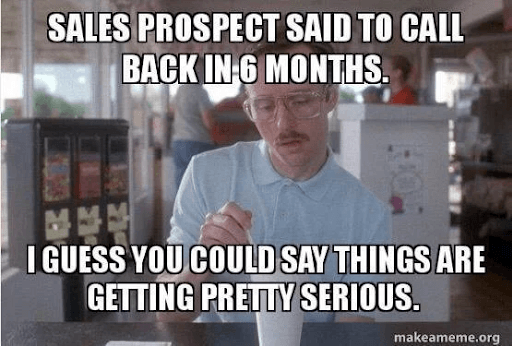
Rebuttal example
Prospect: Reach back in 6 weeks. We will be ready then.
SDR: No worries. I understand it is a bad time, and I'll be glad to do so. However, I would still like to set up a five-minute call to demonstrate how we can help you {Metric Value}, so you can scale up your business as soon as possible and with ease. This way, if we are not the best fit, we don't have to worry about me chasing you in six weeks, but if it is, we'll talk more about it then. When is a good day and time for us to schedule a quick chat?
Hint: Reassure them that this is not a buying conversation. You just want to show them how valuable your product is and what it can do for them.
#8 Send info over the email
This objection is always present when you are cold calling or doing a demo. You would think that prospect wishes to receive all the information about your product, as they are a systematic person, but the truth is sometimes harsher for the SDR’s heart. The reason often implies that the prospect has already made up their mind about your product and that it might not be the best solution for them. By asking you to send information over the email, they hope to cut the conversation short.
Rebuttal example
Prospect: Could you please send all the info over the email? It’s easier for me to understand what you are offering.
SDR: I’d be happy to email all the information to you. I can send you our whitepaper and other educational content. But would you mind me asking just a couple of questions so I can only send you the part that you’ll find most important for your business needs? It’s just not to waste your time.
Hint: Agree to send them the information, but not before you ask them for additional short questions about their business. These questions serve as gathering more info about their pain point and start providing quick value for them to ask to schedule a call in the end.
#9 I’m not interested in your offer
How many times did you just hand up the phone and never call again the prospect who just said they weren’t interested? If your answer is too many, you need to step up your game. To do this, you would first need to ask yourself how they are not interested in something you’ve never actually presented.
The truth is that this objection usually means that they are busy. You should turn this core reason to your advantage, so restructure your introduction to focus on the expertise.
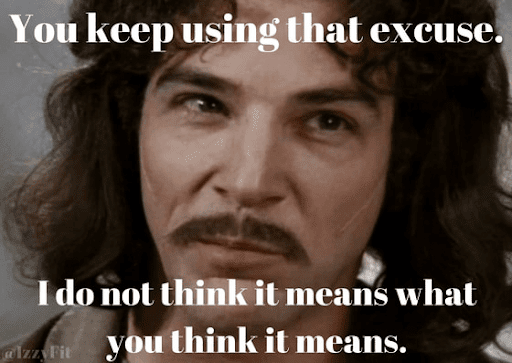
Rebuttal example
Prospect: Thanks, but I’m not interested in your offer.
SDR: No worries. I can hear that you are busy. I just wanted to mention that I wouldn’t want to waste your time. What I want to tell you quickly is how we can help you grow, just as we helped {Other Companies in the Industry}. Would you like to hear how they managed to {Personalized pain point value with metric} while using our product?
Hint: Focus on prolonging the conversation as much as possible, just enough to demonstrate expertise using the pain point. This way, your prospect can see that you have relevant experience to back you up and that you know your worth. Objection handling win!
#10 Pitching back
As a pretty new strategy on the block, particularly in the B2B streets, pitching back to your pitch became somewhat of a new trend. This is a special situation where other B2B companies pitch you back, usually on demo calls. Translation? They are not interested in your product or service - they are just using the chance to show you their own.
There is nothing wrong with presenting your solution, but there is a problem when they only agree to the call to pitch you back. This is now a mind game, so be prepared.
Rebuttal example
Prospect: Your product sounds interesting, but did you happen to know that the {Product} can do {Value}.
SDR: Yes, that indeed. Say what, would you be willing to try out {Product}, and we will try {Their Product}, and at the end of the Free Trial, we can discuss the experiences with our teams together in a meeting and go from there. Fair?
Hint: Proposing a collaboration will definitely surprise them, and there is a chance that their decision-maker will see firsthand the value you offer.
Summary
Objection handling is no easy feat. It can come off as somewhat of a straightforward rejection but keep in mind that not all is as it seems and that some objections have their undercover meanings to which you can act on.
Remember that these tricks are your sidekicks during the objection handling process:
- Asking the Questions
- Addressing The Issues Beforehand
- Respond To The Real Issue
- Offering Help To The Decision Making
- Knowing Your Prospect’s Industry
And previously mentioned scenarios are your heroes. As long as you are familiar with common objections and prepared to answer either one from the list, you should be good to figure out the hidden meanings behind objections when you hear them, how to handle them, or simply who you need to just let go.
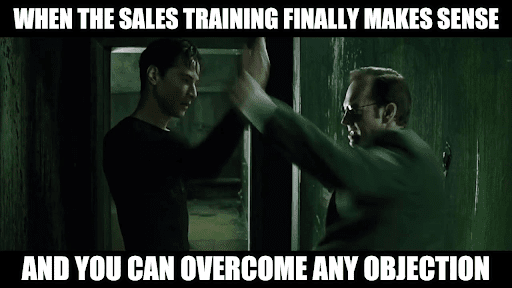
Wish to How Skylead can help you scale up your business and improve ROI? Come by, say hello and test out our LinkedIn Automation & Cold Email Software free for 7 days.

